Comparing Xiangqi (Chinese Chess) and International Chess
Both Xiangqi and International Chess are amongst the most widely played strategic board games in the world. While they may seem different at first sight, many similarities are quite profound. After learning the basics of Xiangqi (Chinese Chess), visitors would often compare both forms of chess and ask questions.
- Which is harder, Xiangqi (Chinese Chess) or International Chess?
- What are the similarities between the two?
- How is Xiangqi different from International Chess?
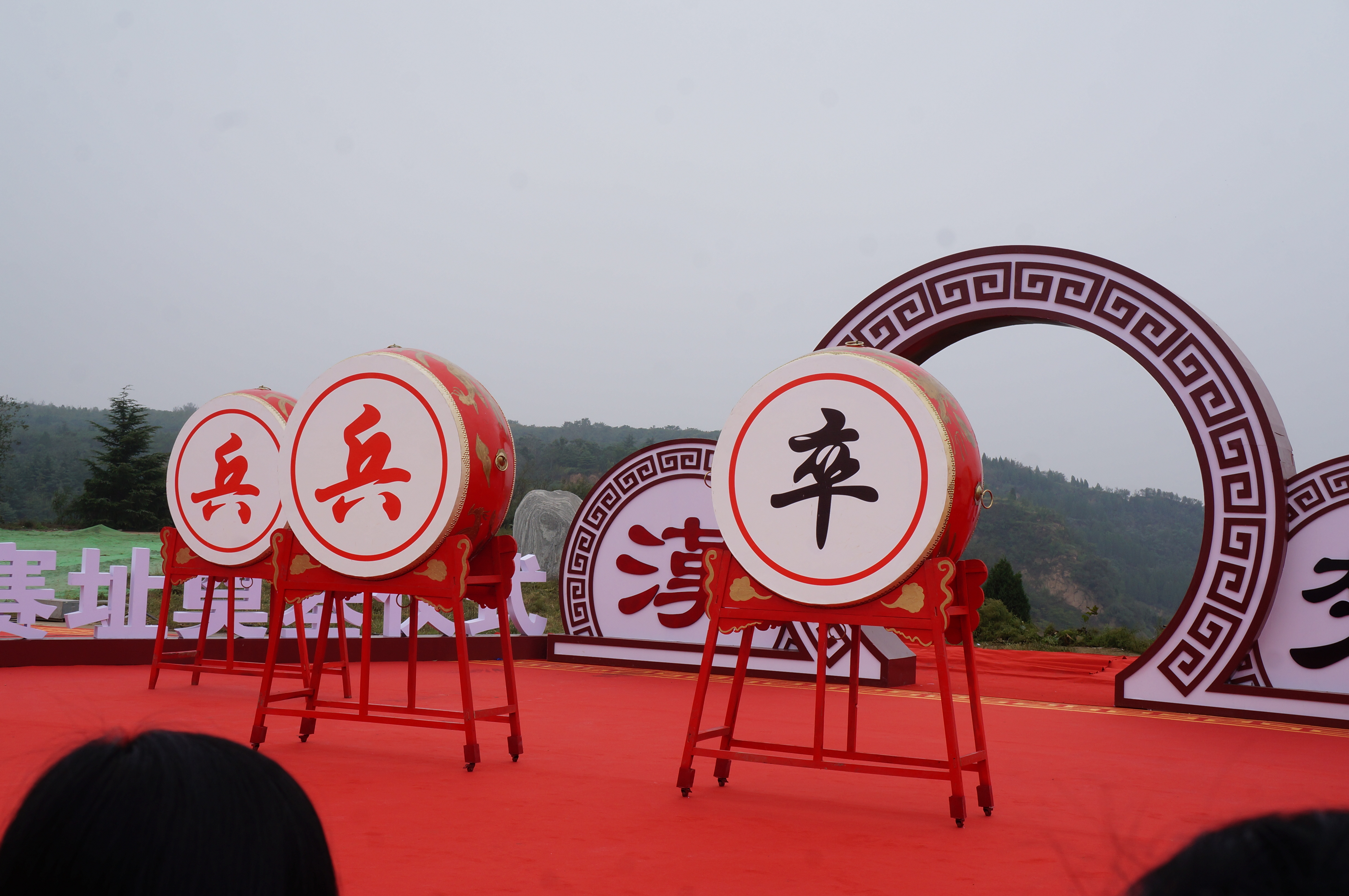
The following are some frequently asked questions, which in essence, are queries into the similarities and differences between the two games:
The same questions are also asked in Chinese forums whereby players who know Xiangqi want to know more about International Chess. All these questions are directed at comparing both forms of chess. And they are not easy to answer. Comparing apples with oranges is not easy, even though they are both fruits.
While browsing the internet, it would appear that most of the posts in English are by chess players, but most of the discussions were simply discussions which contained mostly opinion. Similar discussions can be found on Chinese websites.
Over the years, the Webmaster has collected information that could provide some insights into the fundamental similarities and differences between Xiangqi and International Chess. In this article, the Webmaster will organize the material that he has found in the hope of providing some new perspectives on the topic.
 The article will be divided into the following sections for discussion:
The article will be divided into the following sections for discussion:
- The Historical and Cultural Implications
- The Chess Board
- The Chess Pieces
- Differences in the rules
- Tactical/Strategical Considerations and Comparisons
- The Opening Phase
- The Midgame and Endgame Phase
- Is Xiangqi more complex than chess? Mathematical comparisons
- Opinions by some experts
- Final Reflections
Before continuing, the Webmaster would like to remind the reader of three things:
- Xiangqi is the official name of the game, not Chinese Chess or Elephant Chess,
- Chess in this article would be used in a generic context. International chess would be used to refer to the form of chess played on an 8*8 checkered board whereby past World Champions include Fischer, Karpov, Kasparov, Anand, Carlsen, et cetera.
- The Webmaster would assume that the reader has some basic knowledge of International Chess and an introduction to International Chess pieces, moves et cetera would not be given. The men in International Chess would be mentioned concerning the various issues mentioned in this article.
The Historical and Cultural Implications
The origins of both Xiangqi and International Chess has long been a hotly debated topic. Western scholars believe that Xiangqi originated from International Chess while their Chinese counterparts suggest that the opposite is true. This topic would NOT be discussed in this section.
Whatever the origins of both forms of chess might be or how they might be related, it would suffice to say that they reflected the social, historical, and cultural values of the society when they were invented. Other than the technical aspects, there is also much history and symbolism to the Xiangqi board.
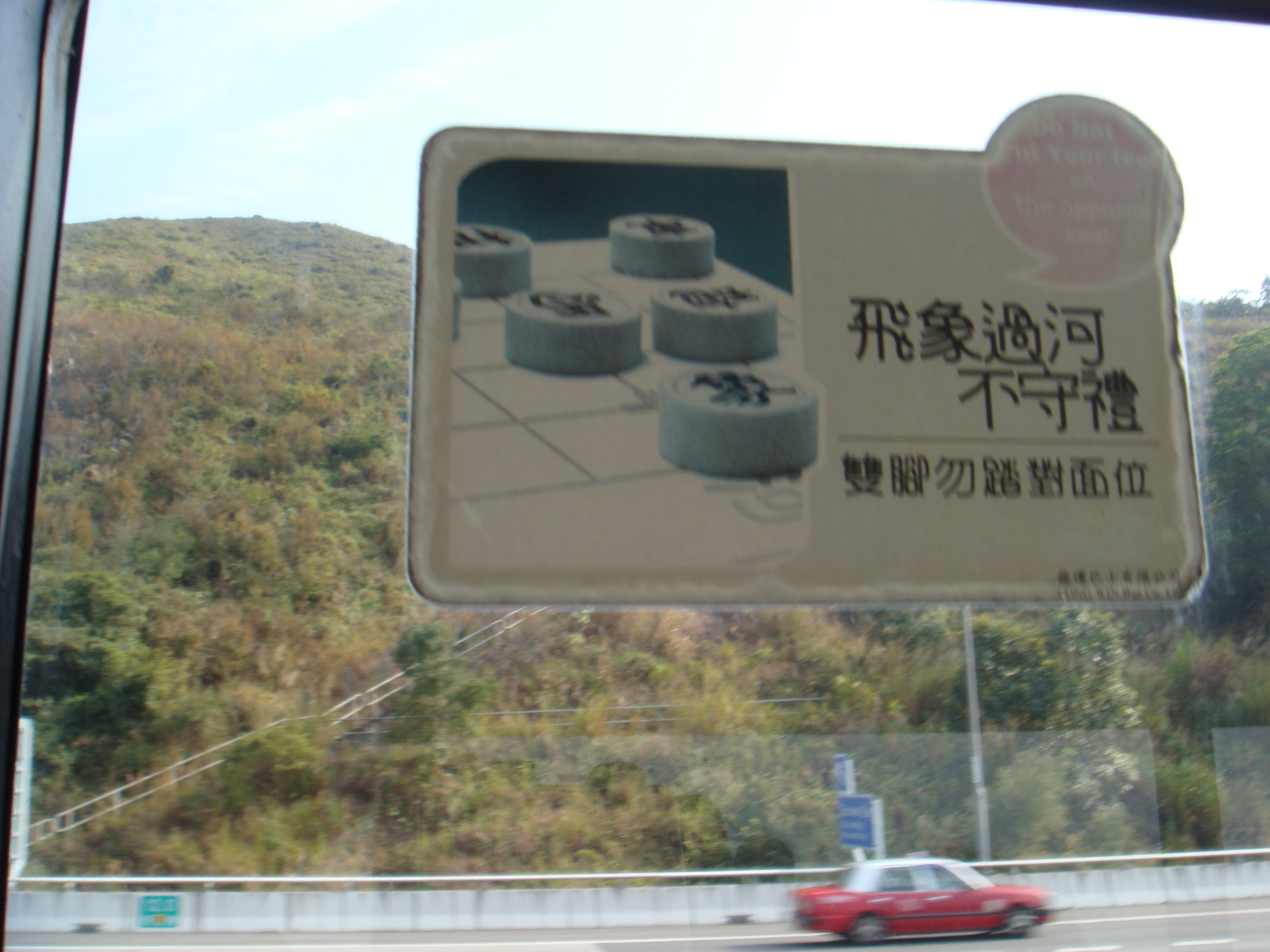 Chinese Women's Grandmaster Liu Shilan (刘适兰 Liú shì lán, 1962 - present) (1) wrote an article that was published in a Chinese journal back in 2003. The Webmaster has translated the title as "Understanding the differences in the culture of the Chinese and the West from the difference found in International Chess and Xiangqi." (2) The Webmaster recommends the article as a great read.
Chinese Women's Grandmaster Liu Shilan (刘适兰 Liú shì lán, 1962 - present) (1) wrote an article that was published in a Chinese journal back in 2003. The Webmaster has translated the title as "Understanding the differences in the culture of the Chinese and the West from the difference found in International Chess and Xiangqi." (2) The Webmaster recommends the article as a great read.
- In a nutshell, the current form of Xiangqi was established no later than the Southern Song Dynasty and represented thousands of years of the feudal system in China.
- The current form of International Chess probably reflected the early stages of capitalism in Europe.
These cultural differences had major implications on the way both games are played.
The Webmaster would assume that the visitor has a basic understanding of the history of International Chess and would not go into the details here. Instead, a very brief introduction to Xiangqi will be presented.
Concerning the chessboard, GM Liu reminded that the Xiangqi board represented the standoff that happened during the Chu-Han Contention. The river on the Xiangqi board was the Hong Canal. On the eastern side was Xiang Yu, while on the Western side was Liu Bang.
There was also numerical symbolism to the Xiangqi board. Traditionally speaking, the number '9' represents infinite in Chinese culture. It also signifies abundance.
If the river on the Xiangqi board was eliminated and both territories were joined together, an 8*8 uncheckered board, similar to the one used in International Chess, can be seen. In Chinese numerology, '8' would represent infinite extension and is used together with the number '4' (representing north, south, east, and West) to mean that something encompassed a great area.
As for why the pieces were played on the intersections in Xiangqi, GM Liu explained that it was because the ancients had different concepts about war. In China, a battle was done along the roads or various pathways. In the West, wars were more confrontational, and hence, the pieces were played on squares.
The Chess Board
Xiangqi is played on a 9*10 board with nine files and ten ranks. The pieces are played on the intersections. As a result, there are 90 intersections whereby thirty-two pieces have occupied in the array. Hence, slightly less than one-third of the board is occupied, and there are two-thirds of the board that is free for the pieces to move.
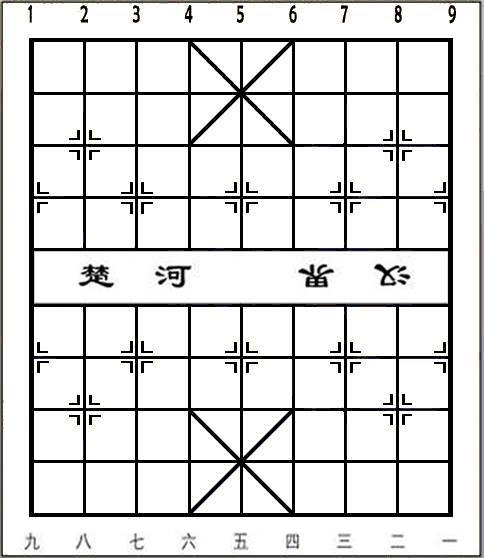
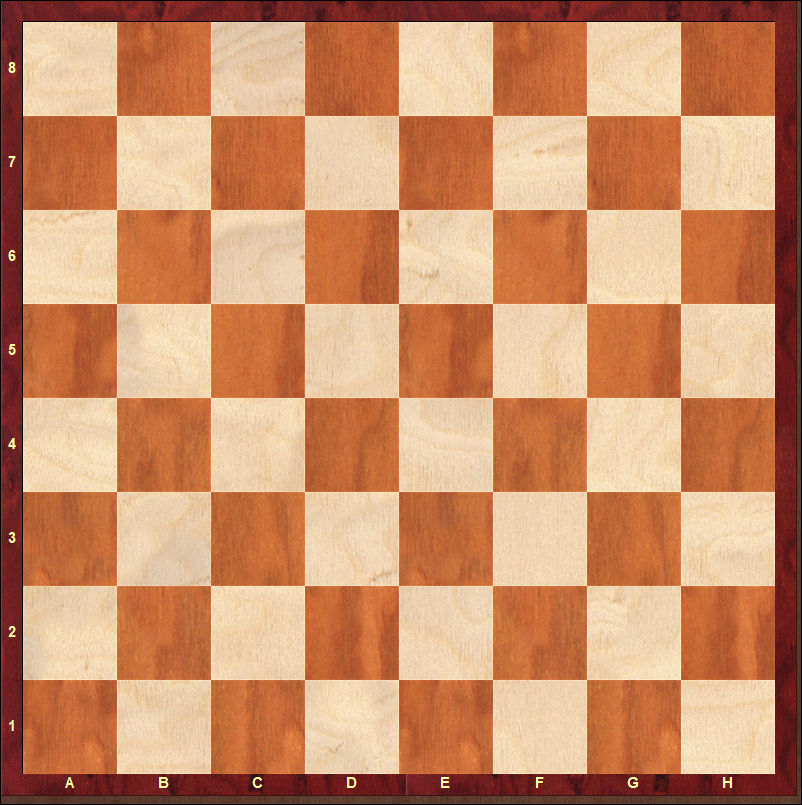
International Chess is played on an 8*8 checkered board whereby the pieces are played in the squares. As in Xiangqi, there are also thirty-two men. However, these thirty-two men would occupy half of the chessboard right at the beginning.
The number of men and the available intersections/squares that can be moved right at the beginning would have major implications on the game, especially in the opening phase. These implications would be discussed slightly later on. (3)
The Chess Pieces
There are seven different types of Xiangqi pieces. They are:
1 King, 2 Advisors, 2 Elephants, 2 Horses, 2 Chariots, 2 Cannons, and 5 Pawns.
In International Chess, the chess pieces are slightly different:
1 King, 1 Queen, 2 Bishops, 2 Knights, 2 Chariots, and 8 Pawns.
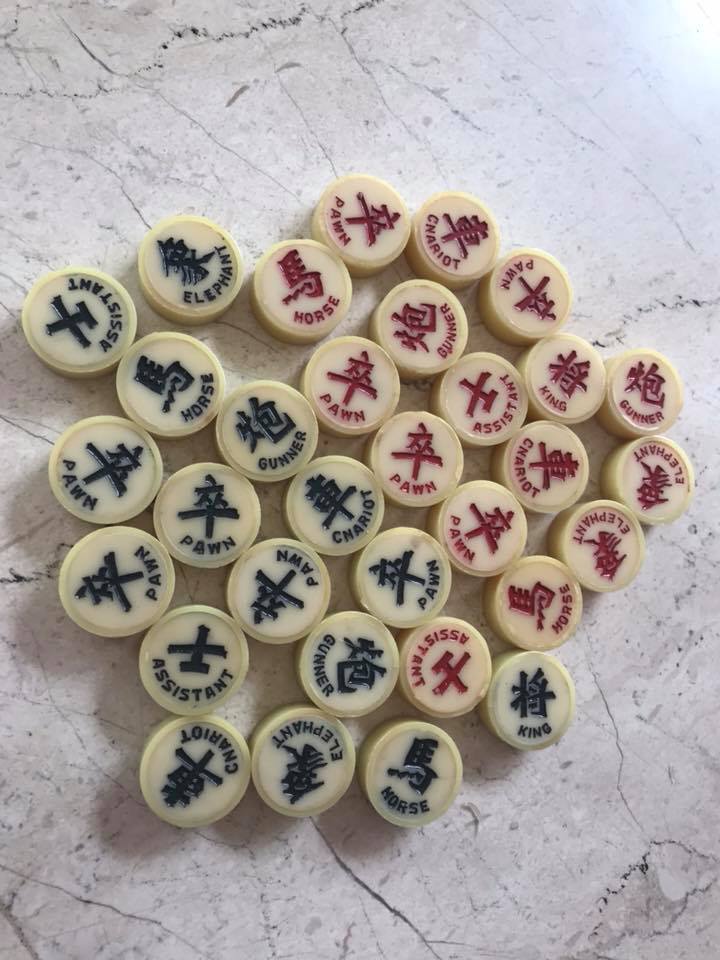 The King in Xiangqi is confined to the palace, where there are only nine intersections to move. The two Advisors are also confined to the palace and have to share a total of five intersections in the palace. Imagine nine intersections for three pieces to move. It is the reason why the King in Xiangqi can be cramped in the palace, and various tactics use to exploit this fact is more prevalent in Xiangqi. In International Chess, especially towards the endgame, the King can move about the board, and the fact that a stalemate is a draw would mean that less emphasis is placed on tactics to try to create a congested situation for a kill.
The King in Xiangqi is confined to the palace, where there are only nine intersections to move. The two Advisors are also confined to the palace and have to share a total of five intersections in the palace. Imagine nine intersections for three pieces to move. It is the reason why the King in Xiangqi can be cramped in the palace, and various tactics use to exploit this fact is more prevalent in Xiangqi. In International Chess, especially towards the endgame, the King can move about the board, and the fact that a stalemate is a draw would mean that less emphasis is placed on tactics to try to create a congested situation for a kill.
The Elephants cannot cross the river, and they have to share a total of seven intersections on their side of the board. The Elephants can also be blocked, which further limits their movement.
The Horse in Xiangqi moves like the Knight, but it can be blocked. While it may seem that this was a major flaw, the fact that the Horse can be blocked in Xiangqi would allow for more discovered attacks. More on this topic will be exemplified later.
The Chariot in Xiangqi is the only piece that moves exactly like its International Chess counterpart: the rook.
The pawns in Xiangqi can only move forward for the first two moves until they cross the river. Upon crossing the river, they may traverse to the adjacent intersection or advance for one intersection, but they can never retreat. Hence, a pawn would usually be most threatening upon reaching the throat rank (the adjacent rank before the enemy's bottom rank). Pawns that have reached the throat rank on the 4th or 6th file are affectionately called ghosts or small ghosts because of their terrifying potential.
But upon reaching the enemy's bottom rank, they lose much of their threat and can only traverse the board. Unlike International Chess, the pawns cannot be promoted. This rule would greatly decrease their threatening potential, and that is why pawns that have reached the enemy's bottom rank are affectionately known as old pawns.
The Cannon would perhaps be the most intriguing Xiangqi piece to the Westerners. There are two aspects to consider:
- The Cannon moves exactly in the same manner as the Chariot.
- However, when capturing material, it needs a piece, which could be a friendly or enemy piece called a cannon mount, to 'jump over' to capture the enemy piece immediately adjacent to the cannon mount.
- This peculiar trait of the Cannon makes it a great piece to use to control an open line, especially the central file.
Concerning the lack of a Queen-like piece on the board, Liu Shilan felt that it was because the society in China in ancient times was male-dominated.
Floating Value of the Pieces
Many beginners would ask about the value of the pieces as a rough guide for decision making. In Xiangqi, the piece value is 'floating.' The value would be dependent upon the situation on the board, especially in Xiangqi. So, while the value of a piece is a factor that can be used to analyze the situation and make a decision, it is, at best, a very rough guide.
For example, a pawn that had traveled into the enemy palace to become a threat would be worth much more than a pawn that has not crossed the river. However, if the pawn mentioned above were pinned, and the entire situation was in a deadlock, any pawn had an open line and was able to attack would perhaps be more valuable.
If the enemy had chariots to attack, it would be more valuable to have advisors to defend as compared to elephants. However, if the enemy's chief attacking piece were a horse, elephants would generally provide better defense.
The value of the Cannon would also generally decrease as the game proceeds because of the lack of cannon mounts.
In the endgame, a solitary horse can defeat the enemy king, but a cannon would need other material to help out. The piece value of a combination would often be worth more than the sum of the individual values because of the potential in the combination.
There is still much room for discussion, but the general idea is:
- In Xiangqi, different situations would result in different fluctuating values.
- It would be best to determine the value of a piece based on its position (how well it defends or how far it was from the enemy palace) and the combinations still present on the board, and then consider what the enemy has.
The study of endgame theory would perhaps place more emphasis on the value of the pieces. However, when comparing Xiangqi and International Chess, the value of the pieces would be a good factor to consider, and it can be used to explain a certain phenomenon.
The Webmaster of www.xqbase.com, Huang Chen (黄晨), and his team have written a series of articles studying the difference in Xiangqi and International Chess. The series was an eye-opener for the Webmaster as it provided several different ways of looking at the difference. One article was concerned about piece value. (4)
About the value of pieces, they made a table comparing the pieces in Xiangqi and in International Chess, which the Webmaster has translated into English. Huang had predefined the scope of the various Xiangqi pieces and explained in detail the various characteristics of the individual pieces and their strengths and limitations before assigning an arbitrary value to the piece. The Webmaster finds the values that he gave were similar or of consensus and will not elaborate. Interested readers can see the webpage whereby the URL is given below.
The conclusion that Huang Chen and his team came about was that:
In Xiangqi, the board was bigger, but the total value of pieces was lower than in International Chess. The opposite was true for International Chess. This revelation would have significant implications.
Density of Firepower
Huang Chen and his team then introduced a concept called Density of Firepower (火力密度 huǒ lì mì dù):
- Density of Firepower = Total Piece Value/ Board Size.
- The Density of Firepower for Xiangqi was: 106/90 = 1.18.
- The Density of Firepower for International Chess was 156/64 = 2.43.
- Hence, the Density of Firepower for International Chess was more than twice that of Xiangqi.
According to Huang Chen, when the Density of Firepower was low, as in the case of Xiangqi, it would be common to see the forces trying to create breakthroughs in the enemy defense. He used it to explain it was easy to see confrontations of the opposing forces in the midgame phase in Xiangqi.
The Webmaster would like to add that the presence of more open lines in Xiangqi would indeed steer the game into a direction whereby opponents would try to infiltrate the enemy's position. There is no need to worry about no pawn structures. Instead, defensive formations in Xiangqi are relatively more open.
Huang Chen would also explain why there was added emphasis on the various killing techniques based on the lower Density of Firepower. These various killing techniques are called Basic Kills on this website.
Another implication that Huang felt was about the lower Density of Firepower was that it could explain why it would be less possible for a game to enter the endgame phase in Xiangqi. It would be more likely for both colors to go at it with early confrontations, and there would be a greater emphasis on tactical play.
As for games like International Chess, whereby the Density of Firepower was higher, it would be more of a war of attrition whereby opposing parties would try to wear each other out. Trading material would also encourage the game to proceed naturally into the endgame phase. Thus, the material value would be more appreciated in International Chess, and there was a greater demand for the endgame skills in International Chess.
If there is anything that must be learned from this article, it would be the concept of the Density of Firepower.
Differences in the Rules
The rules for Xiangqi is much more complicated than it appears.
Some basic knowledge:
- There are TWO official sets of rules for Xiangqi.
- There were rules for playing Xiangqi as far back as the Southern Song Dynasty (1127-1279AD). The rules used in ancient times were slightly different from modern-day rules about repeated positions.
- In 1956, Xiangqi gained status as a sport in China, and the Chinese Xiangqi Association was formed. The first-ever Chinese Xiangqi Individual Championships in China were held that year, and a committee was formed to formulate the rules. As the Chinese Xiangqi Association regulated the rules, the Webmaster has decided to call them the CXA Rules, which are called 《象棋竞赛规则》(xiàngqí jìngsài guīzé) which can be translated as the rules of Xiangqi to be used in competition. To date, there have been more than ten revisions with the latest revision being done in 2011.
- Outside of China, the Rules of Xiangqi commissioned by the AXF was used. It was formulated in the late 1970s and was the official standard for tournaments outside of China up till 2018.
- In 2018, the World Xiangqi Rules was established based on the AXF Rules and is now the golden standard for competition in the World, outside of China. The Webmaster translated the English version.
It would be beyond the scope of this article to discuss them. Instead, a separate article will be written to address this issue.
To the newcomer, what is needed are some simple rules on how to conduct a game. The rules mentioned below would refer to the most basic rules required to conduct a casual game.
Rules for Casual Play
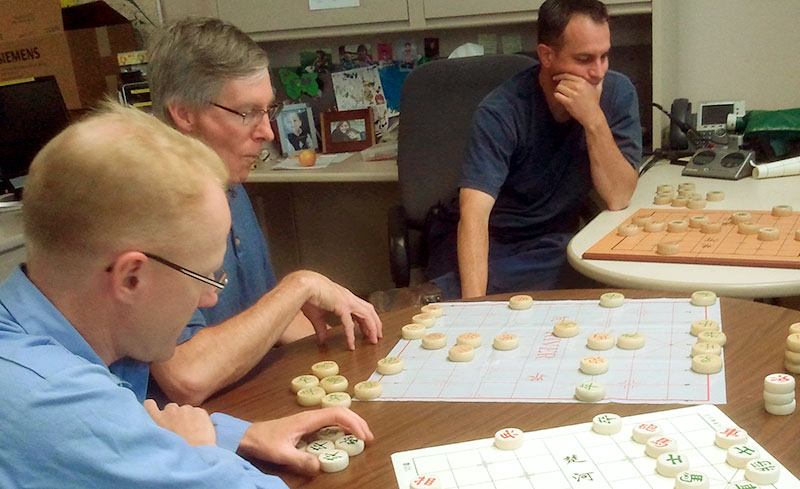 It would be hard to compare the rules of both games, but the Webmaster has chosen to discuss them in two different scenarios: the rules used in casual over-the-board play and the rules used in tournaments.
It would be hard to compare the rules of both games, but the Webmaster has chosen to discuss them in two different scenarios: the rules used in casual over-the-board play and the rules used in tournaments.
The Webmaster has read the Laws of Chess and also the US Chess Federation's Official Rules of Chess that was given to the Webmaster by Davide Nastasio. But for this article, since it is targeted mainly at the Western reader, the rules used in Xiangqi shall be discussed only.
In a nutshell, the following rules would be fundamental differences that International Chess players would have to get used to when experimenting with Xiangqi:
- Perpetual Checks (长将 cháng jiāng) are never allowed. This rule rises above all other rules. The player delivering perpetual checks would be punished with a loss even if he had a winning position, but he refused to change his moves.
- A Stalemate (困毙 kùn bì) would end in a loss for color whose King was placed in a stalemate. You have to fight till death, even if it means coming out of a shelter.
- There is no such thing as castling, promotion of the pawns, or en passant in Xiangqi.
- The existence of a special rule called the Royal Rule, which states that the Kings cannot face each other the same file without any intervening piece (which may be of either color). This rule would give the King a chariot-like presence, especially in the endgame.
There are some similarities for the rules used in Xiangqi and International Chess:
- Takebacks are NOT allowed, but the rule can be broken quite often in OTB play.
- The Touch-Move Rule is to be followed in both forms of chess, but again, there may be instances in OTB play.
- Time controls for both casual and tournaments are similar.
- Tournaments are organized using similar systems like the Swiss systems.
The rules stated above would impact the way Xiangqi is played and greatly affect the strategy and tactics that could be employed.
Generally speaking, the rules in International Chess are much simpler in the Webmaster's humble opinion, especially with regards to the passing of judgment on repeated controversial positions. Huang Chen mentioned a similar viewpoint. (5)
Tactical/Strategical Considerations and Comparisons
Perhaps this section would be the section that most visitors to xqinenglish.com would be interested in. The Webmaster thinks that it is also perhaps the most important section on the technical differences in the entire article.
There is very limited literature or studies on the topic. Generally speaking, bloggers or opinions seen on various chess forums would suggest that Xiangqi was a more fluid game. But the views are polarizing, and there have been hot debates.
Huang Chen again wrote the best articles that the author could find. It was also very refreshing. (6) (7)
To begin with, Huang Chen tried to explain the implications of the board and the men in both games. He divided his approach into six perspectives.
1. The scope of the pieces
Unlike International Chess, three chess pieces in Xiangqi are limited in scope: the Advisor, Elephant, and Pawn. The King was excluded from this list as it was discussed in a separate entity.
The Advisor, Elephant, and Pawn are 'territorial' in nature. The Advisor and Elephant can only move in specific intersections while the pawn, although it can cross the river, can never retreat.
International chess pieces, save for perhaps the pawn, do not have these territorial restrictions on movement.
2. Lines and Formations
Note: The Webmaster has chosen to use the term 'formation' as it is a more accurate translation of the Chinese words 阵形, which can be defined as the collective positioning of the pieces in a specific manner.
Huang Chen suggested that because the board was bigger, there were open lines whereby material could be maneuvered or developed. He coined the term '天然线路 '(tiān rán xiàn lù) which can be directly translated as 'natural open lines.' Natural open lines favor the development of long-distance attacking pieces like the Chariot and Cannon in Xiangqi.
In comparison, Huang Chen felt that natural open lines were non-existent in International Chess as there were pawns everywhere to prevent that. Pawns must be traded, and tactics to free open lines for development are often used. However, these open lines were 'man-made' and not natural lines.
Basically speaking, there are four files in Xiangqi that are considered the natural open lines: the 2nd, 4th, 6th, and 8th files. Indeed, there are many names for the development of the Chariot, Cannon, and chariot-cannon combination along these natural lines. Some examples would be developing the Chariot as a filed chariot, countering with the Left Cannon Blockade (2nd and 8th files), Palcorner Cannon, Cross-palace Cannon, and so much more. Note that the 5th file can also be considered to be a natural line of development for the Central Cannon.
3. The Soul Pieces
Huang Chen defined a soul piece as a chess piece whose method of capture DID NOT coincide with the way it moved. The soul piece in International Chess would thus be the pawn, and the Chinese representative would be the Cannon.
The Soul Pieces would also be, as its name suggested, the soul of the game at the start. You cannot avoid pawn structures in International Chess, and it would simply be impossible to ignore the opening formations by the Cannon in the opening in Xiangqi.
4. A Three-Dimensional Concept
Other than moving in a straight line (advancing, retreating, or traversing), there is a third way that some pieces move. In International Chess, that method would be moving diagonally. The ability to move diagonally was critical as it would allow the tactical weakening of the enemy's pawn structure.
In Xiangqi, the concept of three dimensions is very different. Huang Chen believed that the fact that the Horse and Elephant can be blocked could be considered to be an approach to the Three-Dimensional concept. Another important concept would be the fact that the Cannon required cannon mounts to capture material. Because of these three factors (blocking the Horse, blocking the Elephant and the need for a cannon mount), Xiangqi is made much more complicated.
5. Defensive Formations
In Xiangqi, the King is primarily protected by the defensive formations by the Elephants and Advisors. This concept is extremely important for they represent the last line of defense against enemy attacks. Common defensive formations involving the elephants and advisors include the Same Direction Guard and Opposite Direction Guard.
In comparison, pawn structure would be the key defensive formation early on in International Chess, after castling of the King, the pawns on f,g and h files would shoulder the main responsibility of protecting the King. What kind of formation that they can form would affect the survival of the King?
6. The Functions and Status of the King
The King in both Xiangqi and International Chess can still help out in forcing a checkmate. The King in Xiangqi does so with the Royal Rule, as mentioned earlier, while the King in International Chess can be found all over the place. But in comparison, the King in Xiangqi has less potential as compared to the King in International Chess.
To a certain extent, this fact would also reflect the history of emperors in ancient China who seldom went to war.
Huang Chen gave a short table in his article as a summary.
If the visitor were to reflect on the subtleties given here, many things would suddenly make sense.
For example, sometimes, players with a background in International Chess cannot appreciate the fact about the presence of natural open lines in Xiangqi. It would mean that it would be even more important to mobilize the pieces to command these lines early in the opening phase. Thus, one of the tenets in the Xiangqi opening theory is to mobilize the major pieces as fast as possible, and there are many sayings like you have to move your Chariot by the third move, or you would lose the game.
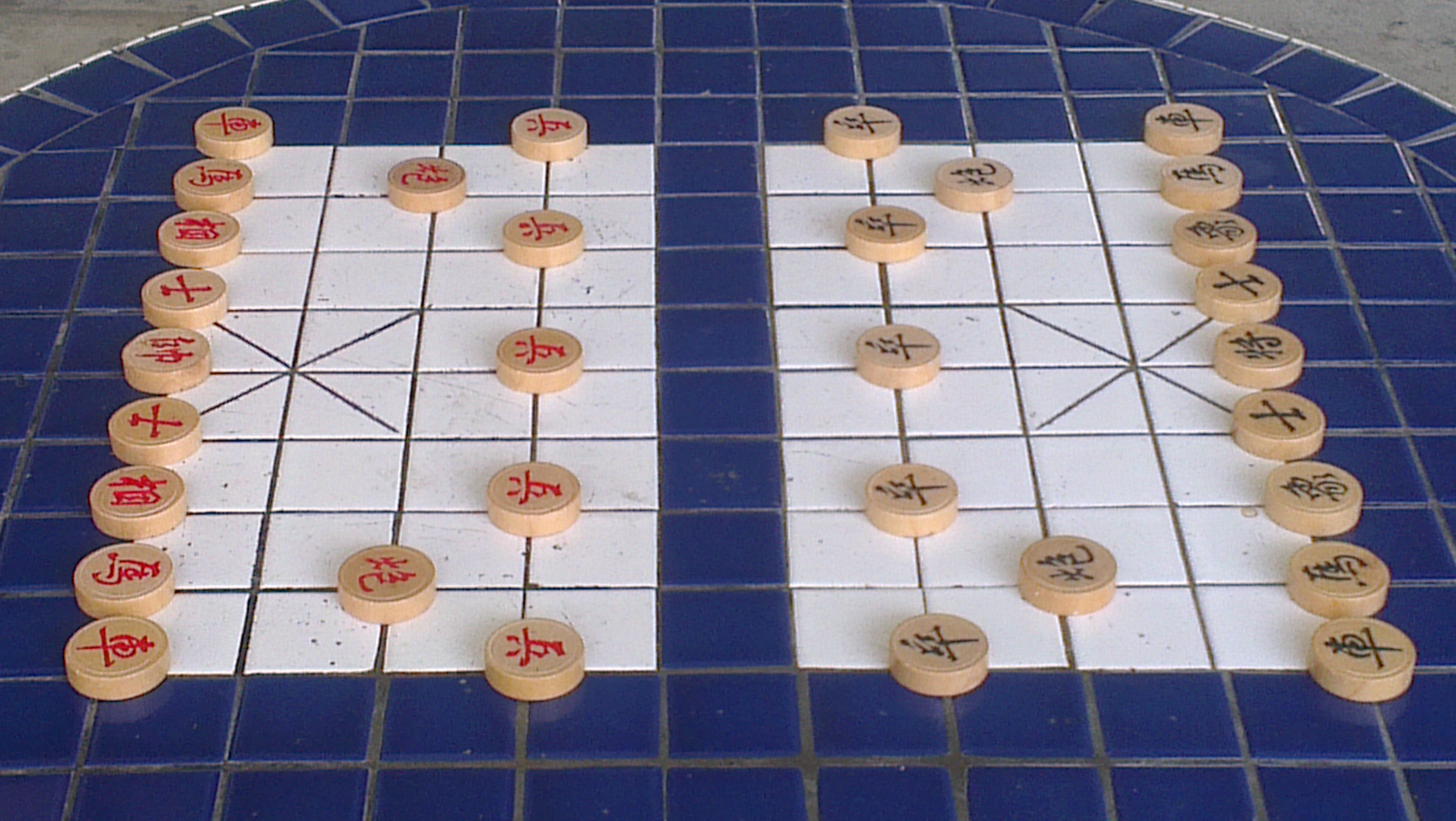 The last tenet mentioned above would contradict opening principles in International Chess, whereby the major pieces are not moved so fast. Instead, a strong pawn structure is more desirable. The reverse would be true for Xiangqi players playing International Chess. The Webmaster remembers that he used to play the Knight for the first move as it resembled the horse opening in Xiangqi when he played International Chess many years ago. The results were often undesirable. More on this aspect would be stressed upon in the next section.
The last tenet mentioned above would contradict opening principles in International Chess, whereby the major pieces are not moved so fast. Instead, a strong pawn structure is more desirable. The reverse would be true for Xiangqi players playing International Chess. The Webmaster remembers that he used to play the Knight for the first move as it resembled the horse opening in Xiangqi when he played International Chess many years ago. The results were often undesirable. More on this aspect would be stressed upon in the next section.
In Xiangqi, it would also mean that focal points on the board, like the riverbank et cetera, are already available right at the start, and it would be critical to try to command them before the enemy does.
And since the King is not under attack immediately, defensive formations by the Elephant and advisors, which Elephant or advisor to move et cetera can be played and adjusted to the situation on the board slightly later on. There would be no need to try to form a pawn structure right at the beginning.
The fact that the Horse can be blocked would seem to weaken it as compared to the Knight, but this relative' weakness' is compensated in another way. Discovered attacks and checks by chariot-horse, horse-cannon, horse-pawn combinations are now seen much more in Xiangqi.
And it is a known fact that diagonal attacks simply are not present. Instead, pincer-like attacks are more commonly seen as the forces attack from all sides, instead of attempting to attack diagonally.
Finally, the King in Xiangqi has to share the palace with his advisors. There would be three pieces that would have to make use of nine intersections. Talk about interesting bedfellows! And because of this fact, the King can be 'smothered' in a congested palace, which makes the Cannon a weapon of choice.
There are many more inferences that can be made from Huang Chen's table given above, which would help you understand the Xiangqi board and its pieces better.
Different emphasis on different tactics.
Now, what are the implications of the factors mentioned above on the tactics used in both forms of chess?
To begin with, tactics in Xiangqi and International Chess are similar in nature.
In his article, Huang Chen listed eighteen tactics that were used. They include trading/exchanging material, sacrifices, pseudo-sacrifices, discovered attacks/checks, Pins, Clearance tactics, forming blockades, pins, deflections, blocking enemy pieces, cross-checks, et cetera. (7)
While the principles were similar, the way the tactics were employed is very different in Xiangqi as compared to International Chess. There is also an emphasis on certain tactics over others in Xiangqi. The same thing goes for International Chess.
Perhaps one of the most valuable information that Huang Chen gave was a short table which the Webmaster has translated below.
|
Tactic |
Xiangqi |
International Chess |
|
Tactics for Leveraging Material |
Used to create kills and is seen commonly in endgame compositions |
Seldom used |
|
Tactics to open lines |
Very seldomly employed |
Frequently used to break the equilibrium |
|
Infiltrating the enemy from behind |
Horse and pawn are commonly used to carry out the tactic |
The King is commonly used to carry out the tactic |
|
Tactics aimed at destroying the enemy defense |
The goal is to break open the defense provided by the elephants and advisors |
Destroying or weakening the enemy pawn structure is a key objective |
|
Tactics used to force a draw |
Trading material is the most commonly employed tactic |
Other than trading material, perpetual checks are attempted |
The Opening Phase
As in both forms of chess, the opening phase remains one of the most sought-after areas of studies. Everybody is interested in getting an advantage going into the midgame.
Opening principles govern openings in both forms of chess. However, the subtle differences mentioned in the previous section would mean you cannot approach the Xiangqi opening with the mindset of using concepts in International Chess.
But there are still similarities between the two forms of Chess. Huang Chen listed four principles that he felt were similar in both forms of chess. (8)
- Mobilization of the pieces in the correct order
- Controlling the important lines or regions on the board.
- Balancing the development of the pieces
- Safety of the King.
The principles would be different in the following aspects.
1) Mobilization of the pieces in the correct order
In Xiangqi, it is encouraged that you move the major pieces asap! The reverse would be true for International Chess. Huang Chen attributed this phenomenon to the difference in the Density of Firepower mentioned above.
A lower Density of Firepower in Xiangqi would make it common sense to try to occupy the focal point, important lines in Xiangqi before the enemy does. The exact opposite would be true for International Chess with a higher Density of Firepower. If you moved the major pieces like the Queen, Rook, or Knight very early on, they would be put in the line of fire and be susceptible to attack.
As mentioned above, this change of mindset is critical for players playing both forms of chess. The Webmaster remembers playing the Knight for the first move many years ago because it seemed to be like the Horse Opening in Xiangqi, without appreciating the subtle differences.
2) Controlling the important lines or regions on the board
There would be some getting used to that is needed for this concept for the visitor with a background in International Chess.
As mentioned above, trying to command the focal points as early as possible is recommended in Xiangqi. This opening tenet in Xiangqi is made possible by the presence of natural open lines, as mentioned above. The fact that some of the pieces are 'territorial' in nature would suggest that only the Chariot, Cannon, and Horse can command these focal points on the board. In comparison, the likes of the elephants, advisors, and perhaps the pawn would not be able to do so. This fact must be appreciated by the International Chess player trying out Xiangqi and would radically alter the way when planning your strategy.
In fact, Huang Chen mentioned in his article that the higher Density of Firepower would the opening lines are less obvious in International Chess. Hence, the concept of regional play would become more obvious in International Chess, where fighting for control of the central squares would be more important as compared to Xiangqi.
3) Balancing the development of the pieces.
There is a similar emphasis on the balance of the pieces and their positions in both Xiangqi and International Chess.
Over-emphasis on the pawn structure or protection of the pieces would result in a loss of initiative and weaken one's position/formation/structure.
However, comparatively speaking, Huang Chen felt that International Chess had more emphasis as compared to Xiangqi on the balance of forces, as can be seen on the importance placed in pawn structures.
Xiangqi would place much more emphasis on getting the major pieces to control the important lines.
4) Safety of the King
Although the safety of the King is of the utmost priority in Xiangqi, over-emphasis on protecting the King would result in loss of initiative.
A short Xiangqi board is given below.
Some final reflections:
In Xiangqi, the most commonly played opening is the central Cannon, which the Webmaster estimates to be the Red opening played for about half of all the matches in the competition. Black's counter to the Central Cannon would be Screen Horse Defense, Sandwiched Horse Defense, the Same Direction Cannons, the Deferred Opposite Direction Cannons, et cetera.
However, there is a steadily growing number of players who prefer to play the Black counters as Red. For example, the Elephant opening transpositions into the Sandwiched Horse formation as Red is often seen, especially when Black counters with the Central Cannon against the Elephant Opening. It would be a reversal of colors openings wise.
As the board is symmetrical in Xiangqi, it is common to see major variations branching out from moving the Horse. For example, developing the horse H2+3 before developing the horse H8+7 would often lead to very different scenarios, or they could also lead back to the same position. This phenomenon would leave the opponent guessing and give the player with the initiative an element of surprise.
Such a phenomenon is not seen in International Chess and can only be appreciated after playing Xiangqi for some time.
Huang Chen would end the section on a few comparisons of the opening phase in both forms of chess.
Comparatively speaking, in Xiangqi, the opening phase would demonstrate more fluid and lively development of the pieces and often transposition back to popular positions with a different order of moves. Hence, comparatively speaking, it would be easier to create flying daggers, which is the Xiangqi term for opening novelties.
In International Chess, the importance of the pawn structure would result in the emphasis on making moves in a particular order. Deviating from orthodox opening lines would be much more dangerous in International Chess than in Xiangqi.
The factors, as mentioned above, would also explain the terminology of the opening in Xiangqi. Unlike openings in International Chess, where the openings are named mostly after persons, places, or a short description of the moves, the opening in Xiangqi is almost named after the important formations used.
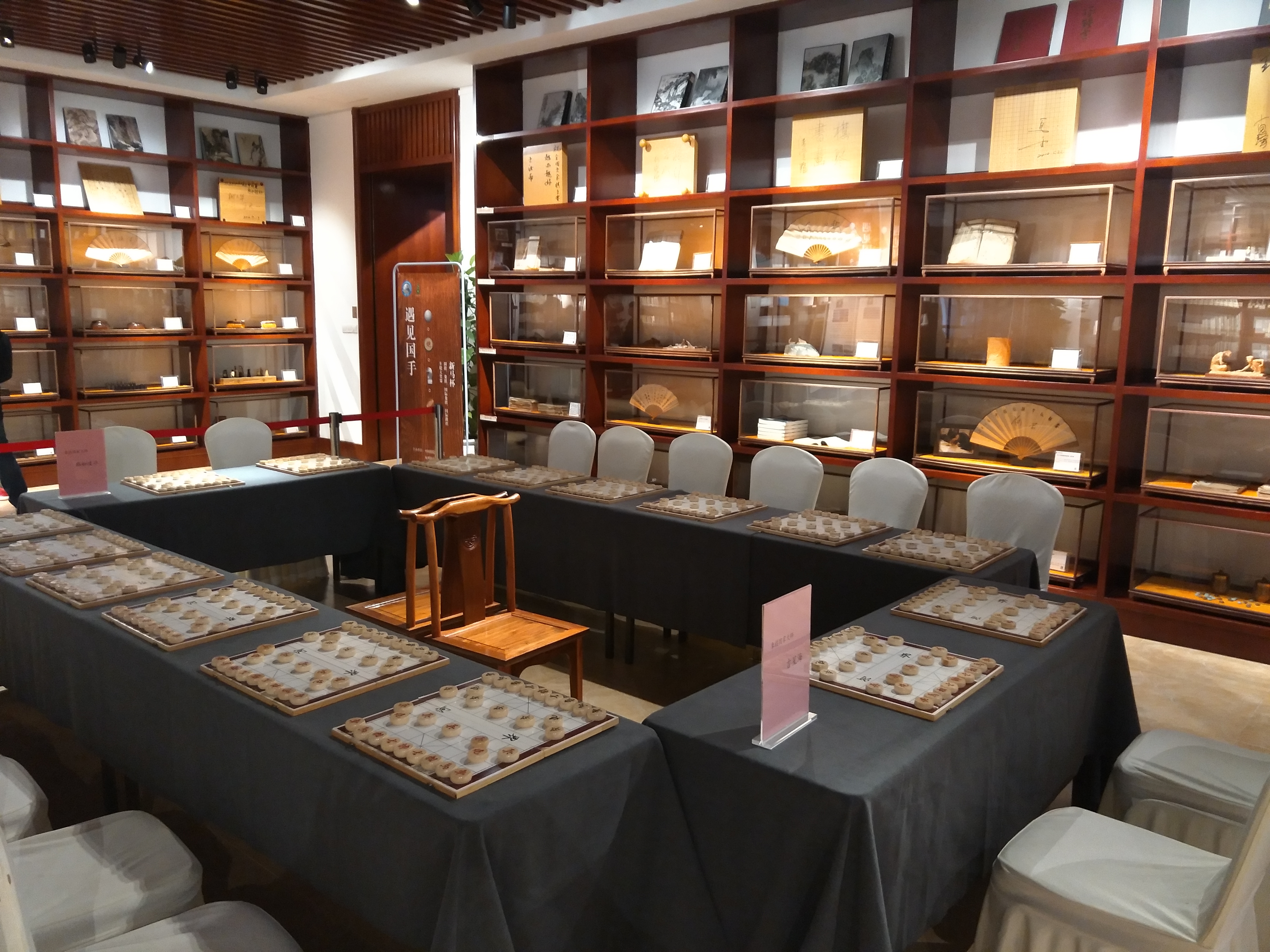 For example, one of the most commonly played opening systems is the (take a deep breath), Central Cannon with Pawn Ranked Chariot, and 7th Pawn Advancement vs. Screen Horse Defense with 7th Pawn Advancement and Edge Cannon for Chariot Exchange Variation. The Chinese is 中炮过河车七路兵对屏风马平炮兑车. And this is an already abbreviated form. The simplest abbreviation would be the Edge Cannon for Chariot Exchange Variation 平炮兑车. Note that both the formations are described, but there is no consensus on the order of the moves as the game can transposition to a certain position from many different move orders.
For example, one of the most commonly played opening systems is the (take a deep breath), Central Cannon with Pawn Ranked Chariot, and 7th Pawn Advancement vs. Screen Horse Defense with 7th Pawn Advancement and Edge Cannon for Chariot Exchange Variation. The Chinese is 中炮过河车七路兵对屏风马平炮兑车. And this is an already abbreviated form. The simplest abbreviation would be the Edge Cannon for Chariot Exchange Variation 平炮兑车. Note that both the formations are described, but there is no consensus on the order of the moves as the game can transposition to a certain position from many different move orders.
There are also interesting names to some of the openings and counters. Some are named after animals, like the Blind Dog Counter 瞎眼狗, the Turtle Back Cannons 龟背跑, the Parrot Cannons 鹦鹉炮, the Nine-tailed Tortoise 九尾龟, the One Horned Monster 独角兽.
Some are named after very specific formations like the Left Tandem Cannons Defense 左叠炮 and Riverbank Fortress 河头堡.
As for opinion on which form of chess had a harder opening theory, the opinions vary. According to Dr. Robert Hubner, he felt that opening theory in Xiangqi was not as complicated as International Chess, but there was more endgame theory to master. (9)
The Midgame and Endgame Phase
One of the biggest differences between Xiangqi and International Chess is the difference in the pace of the game. Basic skills are attempted whenever possible, and there tends to be much greater emphasis on tactical play. In his article, Huang Chen listed eighteen different basic kills. For interested readers, please refer to the Basic Kills section on the website, whereby a slightly different classification system is used. (10)
Huang Chen then proceeded to list a few differences between the midgame phase for the two forms of chess.
Xiangqi Midgame Phase General Considerations:
- The main goal for midgame: To checkmate the enemy king at all costs.
- When a material advantage is present, proactive play is encouraged to increase the initiative. Again, going for the kill is always encouraged.
- When the enemy defense is sound, and the advantage in hand is insufficient to win, trading material is usually NOT advised.
- Trading material is encouraged to simplify disadvantageous situations.
- In standoffs, the pawns would become very important. As a general rule of thumb, two extra pawns wound mean a huge advantage; three extra pawns could be translated into a winning position.
- The presence of special entities on the board. These special entities include the presence of a headhunter cannon, Heaven and Earth Cannons, Open lines for the King, the possibility of a three-piece flanked attack, the presence of a centroid horse, lack of advisor(s)/elephant(s).
Note: A headhunter cannon would be a cannon that has occupied an open line, usually the central file, such that the enemy pieces cannot be moved there for fear
International Chess Midgame Phase General Considerations:
- More emphasis on gaining an advantage, even a tiny advantage like an extra pawn, would make a major difference.
- Accumulating advantages such that there is a significant advantage going into endgame. A slow but steady approach is usually advised.
- Similar to Xiangqi, trading material is generally not advised when placed in a disadvantageous position. Keeping the situation complicated would be better as there would be more chances of creating perpetual checks et cetera for a win.
- Pawns are perhaps the most important factor going into midgame.
- If the material difference is not great, the pawn structure and the position of the King would be most important.
- Key points: the color of the square the pawns are on, the square for promotion, the color of the bishops, position of the King et cetera.
General Considerations for the Xiangqi Endgame
- Different endgame situations require different tactics. Understanding them is critical, and the best way is to learn from the endgame tabiat.
- As there is no promotion of pawns, outcomes are more predictable.
- Types of endgame tabiat can be broadly categorized into pawn endgames, horse endgames, cannon endgames, chariot endgames, chariot-pawn endgames, chariot-cannon endgames et cetera. In the various encyclopedias for endgames, there are even more in-depth studies of various combinations.
General Considerations for the International Chess Endgame:
Different emphasis as compared to Xiangqi. The possibility of promoting a pawn adds uncertainty, and the endgame in International Chess cannot be learned in the same way as in Xiangqi.
Is Xiangqi (Chinese Chess) more complex than International Chess? Mathematical Models
The Webmaster has been asked this question several times, and it appears to be a frequently asked question in the forums discussing both forms of chess. One of the most commonly cited answers is to use mathematical models to compare the number of possible positions that a particular game can have. (11)
There are several ways that it can be calculated, but it is beyond the scope of this article. Instead, the main thing to know is that the degree of complexity is hard to calculate and is based on many different factors. Sometimes, illegal positions may be included. Please refer to the article on Wiki and some of the articles listed in the bibliography for more.
In summary:
|
Type of Chess |
State-space complexity |
Game-tree complexity (as log to base 10) |
|
Xiangqi |
40 |
150 |
|
International Chess |
47 |
123 |
|
Shogi |
71 |
226 |
|
Weiqi |
172 |
360 |
Based on the mathematical models, given, it would appear that in terms of complexity:
International Chess < Xiangqi (Chinese Chess) < Shogi < Weiqi (Go)
In the author's humble opinion, any form of chess mentioned above or not included in the list like Korean Janggi is more than what the mind can handle. While the Webmaster can understand the reason for asking the question of "Is Chinese Chess more complex than Western Chess?", the above mathematical models only represent the cold numbers that were used to compare them, mathematically wise.
The Webmaster's good friend, Sergej Korchitskij, who is one of the strongest Shogi players in Europe and a Xiangqi Federation Master, has put it much better than me:
"My opinion about this matter, if you are interested in. I think that mathematical State-space complexity does not reflect reality. But the actual State-space complexity is higher in Xiangqi and Shogi than in chess, thanks to the implementation of the yin-yang concept. Xiangqi has natural open lines and a high coefficient of emptiness in relation to the playing material, and Shogi has a dropping rule, so that the pieces enter the opponent's camp, providing a variety and complexity of positions. In European chess, according to the world title challenger (1951) David Bronstein, the pieces are grouped around 16 central squares. Penetration into the opponent's camp is not as high as in oriental games of chess. Therefore, there is a division into one's own and another's camp and, as a result, the monotony of positions."
With regards to mathematical models, Sergej added:
"A few words about cognitive State-space complexity. The brain distinguishes and classifies positions according to their structural characteristics. The pawn structure mainly determines the structure of a position in chess. In Xiangqi and Shogi, the nature of the position is determined by all the pieces on the board. Therefore, cognitive State-space complexity is also higher in oriental chess. At the same time, position assessment in Xiangqi is more difficult than in other types of chess due to the high flexibility of the gameplay. The structural features of chess (pawn structure) and Shogi (fortress formation and type of attacking formation) are subject to slower changes."
Some opinions by the experts
Note: The term 'Chess Polymath' was coined by the Webmaster to refer experts with proven track records that were adept in different forms of chess. In China, many Xiangqi players have dans in Go and are also very adept in International Chess.
Grandmaster Larry Kaufman
Chess Polymath Grandmaster (International Chess) Larry Kaufman wrote an article in 1999 which compared International Chess, Xiangqi, Shogi, Janggi, and a few other forms of chess. His credentials gave his comments much weight. The Grandmaster based his analyses on the following points: (12)
- Frequency of Draws in games between masters à"less is better, though perhaps a small percentage of draws may be preferred by some to none at all."
- Rough equality of chances of the two sides
- Importance of memorizing the opening theory à"less is better."
- Variety of play
- History and tradition à"very desirable."
- Game length à"not too short or too long, though this is subjective."
- Strategical Principles à"more are better."
- Early interaction between the two sides. à"desirable, as if you can just do your own thing without looking at the other player's moves, the game lacks interest."
|
International Chess |
Xiangqi (Chinese Chess) |
Korean Chess Janggi |
Shogi |
|
|
Frequency of Draws in games between masters |
Too High (around 50% at high levels) |
Lower than chess but still too high. |
Similar to XQ and IC |
Low. Very desirable. |
|
Rough equality of chances of the two sides |
Quite unequal |
First Player (Red) has a substantial edge but less than IC |
Similar to XQ and IC |
The first move advantage is minimal. |
|
Importance of memorizing opening theory |
Memorized opening theory is way too important at a high level, |
Too much memorized theory |
Less memorized theory. Better score than XQ or IC |
Similar to XQ and IC |
|
Variety of play |
Not Bad but could be much better |
Similar to IC |
Nearly Ideal |
|
|
History and tradition |
Ranks Highly |
Ranks Highly |
Slightly lower on history and tradition |
Comparable to XQ and IC |
|
Game length |
Ranks Highly |
Ranks Highly |
Similar to XQ and IC |
Ideal |
|
Strategical Principles |
Ranks Highly |
Medium (Plenty of Strategies, but less than chess, according to Kaufman) |
Similar to XQ and IC |
On par with IC |
|
Early interaction between the two sides |
Ranks Highly |
Ranks Highly |
Similar to XQ and IC |
Adequate, slightly less than chess. (3/4 pts given) |
|
Final Score |
4.5/8 |
4.5/8 |
4.5/8 |
7/8 |
In his own words, the Grandmaster felt that:
"I think the evidence is strong that shogi is the best game in the entire chess family, and with the risk of offending Go players (a game which I also play and respect greatly), perhaps the best game of all."
Grandmaster Liu Shilan
As mentioned in the introduction of her article, Chinese women's International Chess IGM Liu Shilan said that she was often asked the question of what the differences were between Xiangqi and International Chess. The answer she gave was concise and simple.
According to Liu, she felt that both forms of chess were just different representations of the same entity. Each had its strengths and weaknesses, and both were fun and interesting in their own right. However, because of the differences in history, geography, and cultures, both forms of chess went their paths during their evolution. However, no matter which came first, both were products during the evolution of humanity.
“其实中国象棋与国际象棋没有本质上的区别,只是形式不同而已,两者各有千秋,各有妙趣。”
She elaborated that both forms of chess were reflections of the early times and later sublimed into an art form. Chess was like the formation of language, poems, songs, music, dance, drawings. All these were created as the ancients went about their daily toils. Both forms of chess, in particular, were more able to reflect where the state of affairs during their times of invention. What was remarkable was that even though the origins of the different forms of chess were so far away, and there were so many differences in the culture, both forms of chess had striking similarities.
“国际象棋与中国象棋以及其他许多游戏一样,是人类社会发展的必然产物。棋类艺术起源于古代劳动人民的生产实践,是经过提炼和升华的一种艺术。正如文字、诗歌、音乐、舞蹈、绘画,无不是来源于生产劳动。而在许许多多游戏、娱乐、艺术中,唯有这两个棋种最接近社会的人文环境和反映当时的社会状态,它几乎是人类社会状态的一个缩影。尽管东西方地域遥远,社会文化差异很大,但我们不得不惊叹东西方社会的这两种游戏却如此超乎寻常地相似。”
Some technical aspects were discussed in her article, but it was mainly focused on the history and culture of Xiangqi as compared to International Chess. It was quite a breath of fresh air from other articles that the Webmaster has found and provided new perspectives on the difference between the two forms of chess. The social, cultural, and historical aspects of each game would explain the different characteristics of the two forms of chess. Still, perhaps like what GM Liu said, they are just different expressions of chess in its generic sense.
Final Reflections:
Chess, in its generic sense, is a mind-boggling activity created to stimulate, cause agony, and bring satisfaction. Rather than being restrained by just playing one form of chess, why not open your mind and experience other forms of chess? For Xiangqi players, the Western world plays International Chess. There must be something interesting in it. The same case can be made for Xiangqi. If twelve billion Chinese in the world or about 1/7 th of the world's population knows how to play Xiangqi, it must be doing something right! The same goes for Weiqi, Japanese Shogi, Korean Janggi, Makruk et cetera.
Chess, be it Xiangqi or International Chess, or even other forms of chess that are not discussed in this article, is more than just a bunch of numbers. To the Webmaster, it rekindles memories of agonizing hours of trying to solve puzzles. It also reminds the Webmaster of the ecstasy of solving them. Then there are the rivalries formed during competitions which could be bitter or bittersweet, but these memories are easily shadowed by the fun of forming lifelong bonds with your frenemies on the board, but friends for life.
References
1. contributors, Wikipedia. Liu Shilan. Wikipedia, The Free Encyclopedia. [Online] Page Version ID: 957172403, May 17, 2020. [Cited: Jul 29, 2020.] https://en.wikipedia.org/w/index.php?title=Liu_Shilan&oldid=957172403.
2. 刘, 适兰. 从国际象棋与中国象棋的异同看中西方文化的差异. 武汉体育学院学报. 9 2003, Vol. 37, 5.
3. Authors), 知乎用户(Blog Post with Many Different. 中国象棋、国际象棋和日本将棋分别有什么特色、优点与缺点?. https://www.zhihu.com/. [Online] [Cited: Jul 29, 2020.] https://www.zhihu.com/question/28348783.
4. 黄, 晨. 中国象棋和国际象棋比较研究 - 二、子力价值. www.xqbase.com. [Online] Mar 2004. [Cited: July 30, 2020.] http://www.xqbase.com/other/compare2.htm.
5. —. 中国象棋和国际象棋比较研究 四、特殊走法和特殊规则. www.xqbase.com. [联机] 2004年Mar月. [引用日期: 2020年Jul月30日.] http://www.xqbase.com/other/compare4.htm.
6. —. 中国象棋和国际象棋比较研究 三、棋子的作用和棋盘的阵形. www.xqbase.com. [Online] Mar 2004. [Cited: Jul 30, 2020.] http://www.xqbase.com/other/compare3.htm.
7. —. 中国象棋和国际象棋比较研究 六、战术. www.xqbase.com. [Online] Mar 2004. [Cited: July 30, 2020.] http://www.xqbase.com/other/compare6.htm.
8. —. 中国象棋和国际象棋比较研究 五、开局. www.xqbase.com. [Online] Mar 2020. [Cited: Jul 30, 2020.] http://www.xqbase.com/other/compare5.htm.
9. Stenman, Olavi and Aitta, Timo. A short introduction to the most common xiangqi openings. Kiinlainen shakki - Xiangqi. [Online] Jan 17, 2007. [Cited: Aug 2, 2020.] http://www.shakki.info/english/openings.html.
10. 黄, 晨. 中国象棋和国际象棋比较研究 七、中残局的策略. www.xqbase.com. [Online] Mar 2004. [Cited: Jul 31, 2020.] http://www.xqbase.com/other/compare7.htm.
11. contributors, Wikipedia. Game complexity. Wikipedia, The Free Encyclopedia. [Online] Page Version ID: 964226710, Jun 24, 2020. [Cited: Jul 29, 2020.] https://en.wikipedia.org/w/index.php?title=Game_complexity&oldid=964226710.
12. Kaufman, Larry. http://www.shogi.net/shogi-l/Archive/1999/Nfeb07-06.txt. http://www.shogi.net. [Online] Feb 7, 1999. [Cited: Feb 29, 2020.] http://www.shogi.net/shogi-l/Archive/1999/Nfeb07-06.txt.
